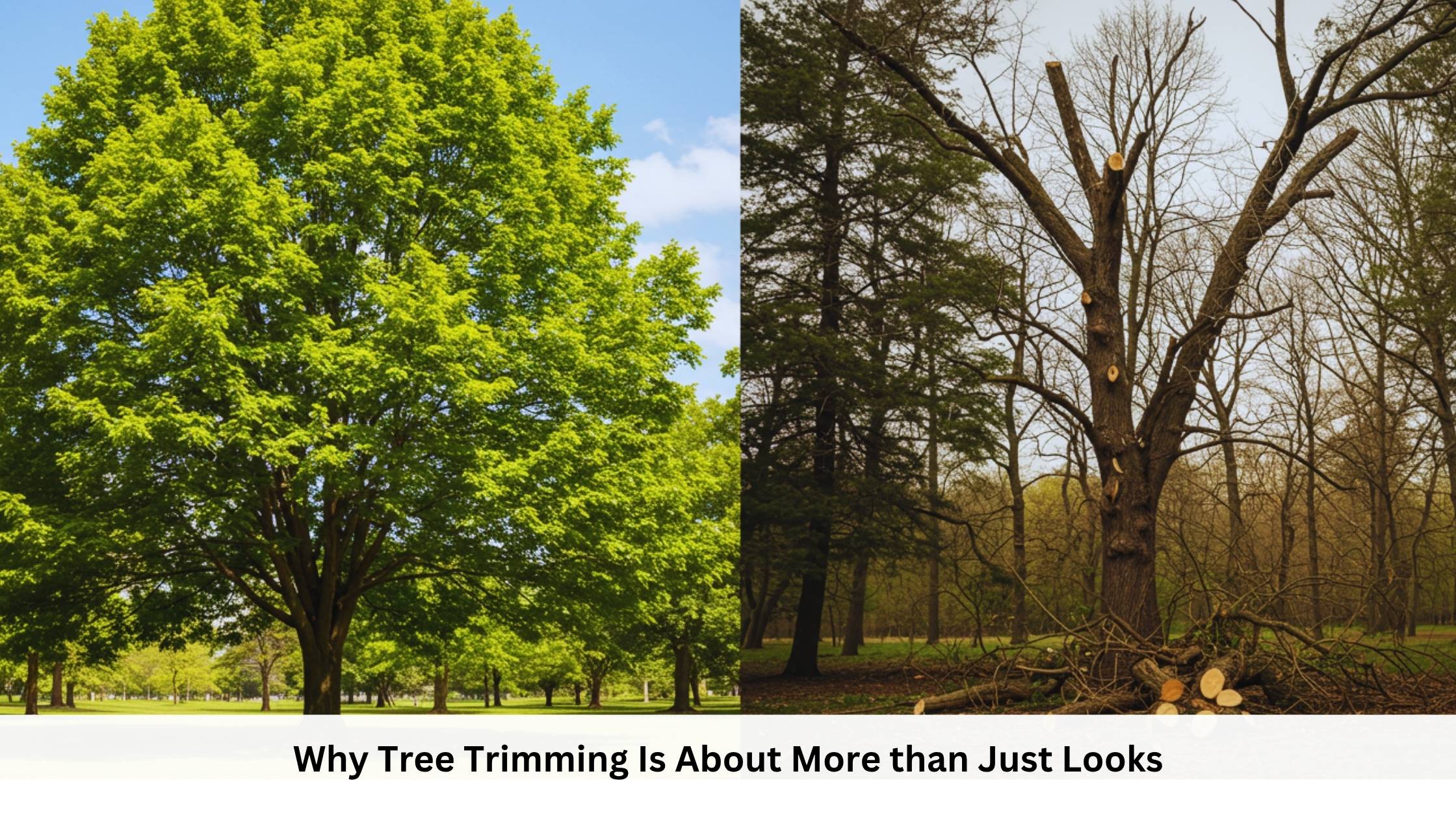When it comes to crafting the perfect outdoor space, most homeowners focus on landscaping essentials like vibrant flower beds, neatly trimmed lawns, or even adding a trendy fire pit. However, one aspect that often goes unnoticed—but holds tremendous value—is tree trimming. Far from being a simple act of upkeep, tree trimming brings a host of benefits that go beyond aesthetics. From improving property safety to encouraging healthier greenery, regular tree trimming has a ripple effect that enhances the overall quality of your home and its surroundings.

Whether you’re a seasoned gardener or someone who prefers to call the pros, this post will uncover the hidden advantages of tree trimming, providing insights on how it contributes to a well-balanced, thriving property.
The Practical Importance of Tree Trimming
Tree trimming is often misunderstood as a purely cosmetic task, but in reality, it plays a vital role in maintaining safety, sustaining healthy growth, and even boosting property value and appeal.
Improving Safety by Mitigating Risks
One of the most important reasons for tree trimming is safety. Overgrown branches can become hazardous, particularly during harsh weather conditions. Wind, storms, or snow can cause weak limbs to break, potentially damaging property or even posing a danger to your family and visitors.
Additionally, low-hanging branches that obstruct driveways or paths can cause accidents. Regular trimming minimizes these risks by clearing out weakened or troublesome branches, ensuring the environment around your home is safe and navigable.
Encouraging Stronger, Healthier Growth
It’s easy to think of trees as being completely self-sufficient. After all, they’ve grown in the wild for millennia without human intervention. But when caring for trees on your property, trimming plays a crucial role in ensuring their long-term health.
Preventing Overcrowding
Without proper trimming, branches can grow irregularly and overcrowd the tree canopy. This congestion prevents sunlight and air from reaching critical sections of the tree, stunting growth and making the tree more susceptible to disease. Strategic trimming opens up the canopy, allowing light and airflow to reach all parts of the structure.
Removing Diseased or Dead Branches
Dead or diseased branches not only look unsightly but can also endanger the rest of the tree. Pruning these problem areas prevents decay from spreading and eliminates places where fungi, pests, or infections could thrive. By removing what’s no longer healthy, you’re making space for stronger, healthier growth.
Boosting Curb Appeal and Property Value
It’s no secret that first impressions matter. A home surrounded by healthy, well-maintained trees radiates charm and speaks volumes about the level of care that goes into the property.
Enhancing Aesthetic Appeal
A neatly trimmed tree can define the look of your yard, creating symmetry and complementing other landscaping features. By contrast, overgrown, unruly branches may cast unwanted shadows, block other features of your property, or give an otherwise polished yard a neglected appearance.
Increasing Property Value
Beautiful landscaping has been shown to increase property value significantly, with some studies estimating that it can add up to 20% to a home’s overall worth. Trimming trees regularly maintains their shape, health, and structural integrity, adding to the longevity of your landscaping investment. A well-maintained yard featuring healthy trees is often a key selling point for potential buyers.
Promoting Sustainability
Tree trimming doesn’t just benefit your home; it also contributes to the environment. When done responsibly, tree trimming aligns with sustainable land practices, creating healthier outdoor ecosystems.
Reducing Waste through Repurposing
Rather than discarding trimmed branches, many people use the cuttings as mulch or kindling. Mulch made from tree trimmings has excellent water-retaining properties and protects soil from harsh weather conditions, keeping your yard’s ecosystem healthy and thriving.
Maintaining Biodiversity
Healthy, balanced trees contribute to the local ecosystem, providing a habitat for birds and contributing oxygen to the atmosphere. Their well-being impacts the wider environment, and regular trimming helps ensure that they remain a robust part of their natural surroundings.
How Often Should Tree Trimming Be Done?
The frequency of tree trimming depends on factors like tree species, growth rate, and the conditions around your property. However, as a general guideline, most trees benefit from trimming every 1–3 years. Younger trees might need more frequent attention to guide their growth properly, while mature trees can usually go longer between trims.
Consider seasonal factors too. Late winter or early spring is typically the best time to trim as trees are dormant and have fewer leaves, which allows you to see branches more clearly and minimizes stress during the growing season.
Tree Trimming for Long-Term Property Care
Tree care is more than seasonal upkeep—it’s a strategic move for long-term property health. Prioritizing Tree Trimming ensures your landscape remains safe, visually appealing, and structurally sound. Regular trimming reduces the risk of falling branches, encourages healthy growth, and keeps your yard looking polished year-round.
Whether your goal is safety, sustainability, or aesthetics, consistent tree maintenance prevents future damage and adds measurable value to your home.
Integrate tree trimming into your property care routine and enjoy a greener, safer, and more vibrant outdoor environment for years to come.
Source: https://megapersonals.co.com/






